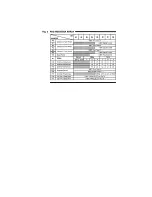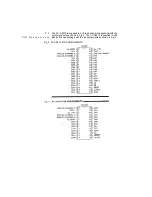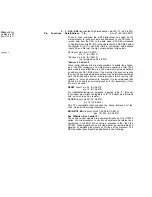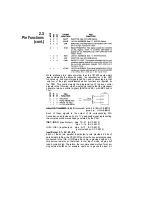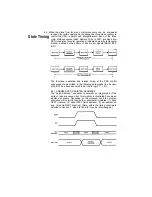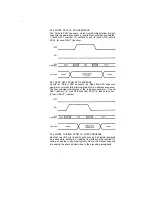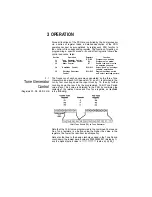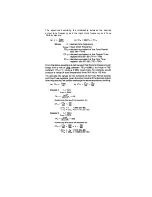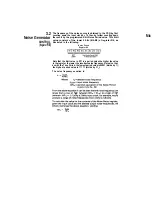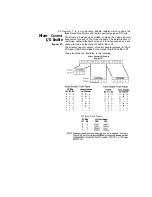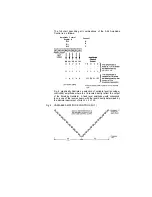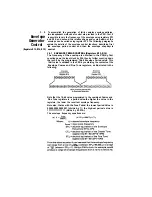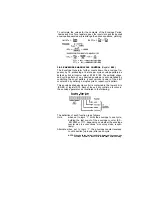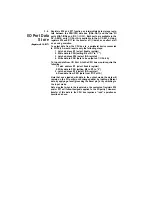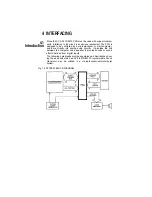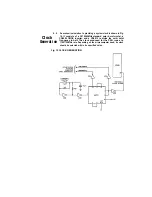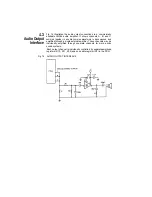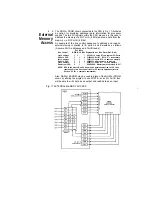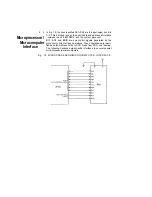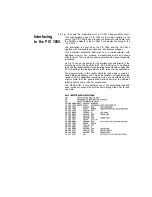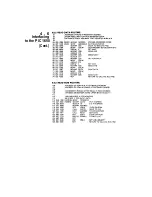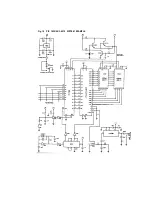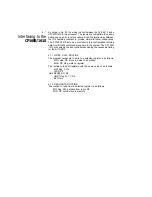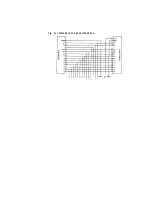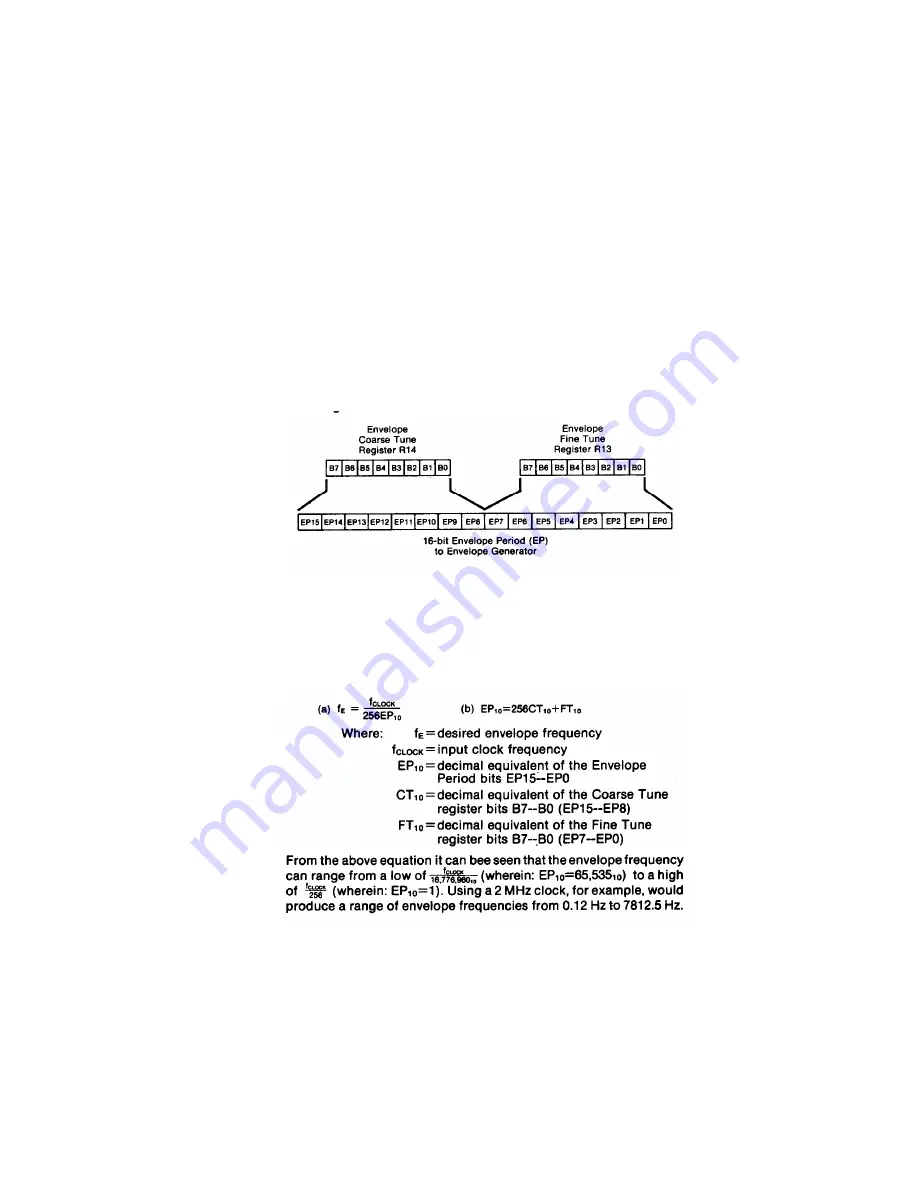
3 . 5
To accomplish the generation of fairly complex envelope patterns,
Envelope
two independent methods of control are provided in the PSG: first, it
is possible to vary the frequency of the envelope using registers R13
Generator
and R14; and second, the relative shape and cycle pattern of the
envelope can be varied using register R15. The following paragraphs
Control
explain the details of the envelope control functions, describing first
the envelope period control and then the envelope shape/cycle
(Registers R13, R14, R15) control.
3.5.1 ENVELOPE PERIOD CONTROL (Registers R13, R14)
The frequency of the envelope is obtained in the PSG by first
counting down the input clock by 256, then by further counting down
the result by the programmed 16-bit Envelope Period value. This
16-bit value is obtained in the PSG by combining the contents of the
Envelope Coarse and Fine Tune registers, as illustrated in the
following:
Note that the 16-bit value programmed in the combined Coarse and
Fine Tune registers is a period value-the higher the value in the
registers, the lower the resultant envelope frequency.
Note also, that as with the Tone Period, the lowest period Value is
0000000000000001 (divide by 1); the highest period value is
1111111111111111 (divide by 65,536
10
).
The envelope frequency equations are:
Summary of Contents for ay-3-8910
Page 2: ...AY 3 8910 8912 PROGRAMMABLE SOUND GENERATOR DATA MANUAL...
Page 7: ......
Page 8: ......
Page 10: ......
Page 26: ......
Page 35: ...4 6 Interfacing to the PIC 1650 Cont...
Page 36: ...Fig 19 PIC 1650 AY 3 6910 SYSTEM EXAMPLE...
Page 38: ...Fig 20 CP1600 1610 AY 3 8910 INTERFACE...
Page 40: ...Fig 21 M6800 AY 3 8910 INTERFACE...
Page 42: ......
Page 44: ......
Page 52: ...7 ELECTRICAL SPECIFICATIONS...
Page 54: ...7 ELECTRICAL SPECIFICATIONS...
Page 55: ......
Page 56: ......


